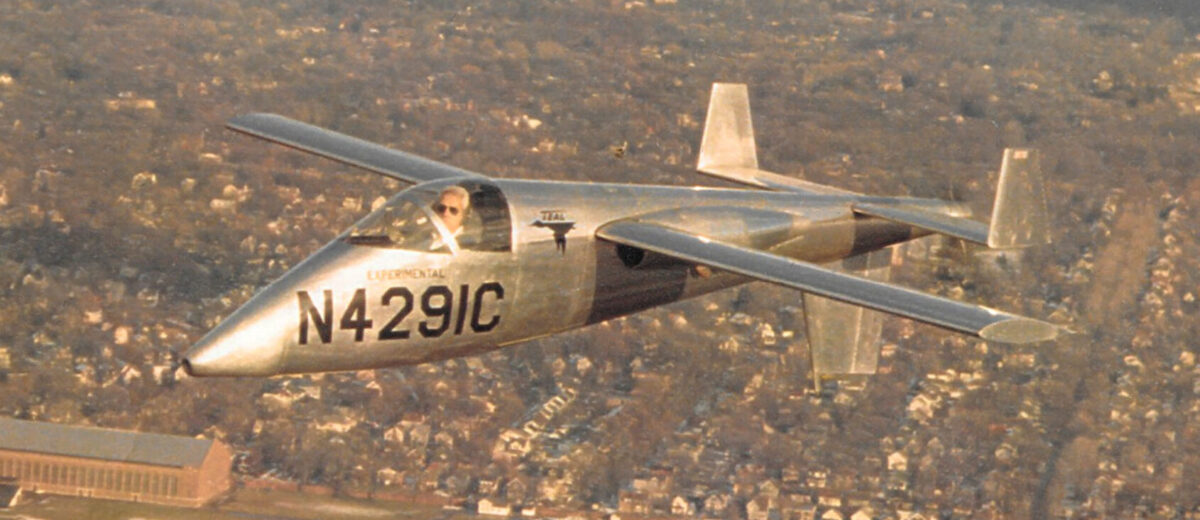Lesher Teal
Born in Detroit, Mich., in 1914, Edgar J. Lesher described himself as an “airport bum” since he was 13. Later moving to Columbus, Ohio, he alternated between teaching ground school and working for the Douglas and Stinson aircraft companies. While with the Stinson division of Convair at the end of World War II, he became intrigued with its Model 106 Skycoach, an experimental pusher-propelled, twin-boom, four-seat light transport, although its performance proved disappointing and the plane was scrapped in 1947.
While attending an early Experimental Aircraft Association fly-in in 1958, Lesher decided to design a homebuilt. Starting in February 1958, he put 5,000 hours into producing an all-aluminum pusher with side-by-side seating for two, which he called the Nomad. In October 1961 he flew his newly completed airplane to the EAA’s Willow Run Airport at Ypsilanti, Mich., where it made a stunning impression. In 1964 it took the grand prize in the AC Spark Plug Rally.
In October 1962 Lesher began work on an even more streamlined single-seater, with an eye toward taking on the altitude, speed and distance records in the Fédération Aéronautique Internationale’s Class C.1a, for propeller-driven aircraft under 1,102 pounds gross weight. He flew the completed the airplane, dubbed the Teal, to Willow Run on April 28, 1965. As with the Nomad, the Teal had an all-aluminum airframe with retractable landing gear. It was powered by the Nomad’s 100-hp Continental O-200A-A four-cylinder engine driving a 64-inch Hartzell ground-adjustable propeller. Wingspan was 23 feet 4 inches, wing area was 60 square feet and length 16 feet 3 inches.
After considering the factors of weight against drag, Lesher decided to install the simplest retractable landing gear mechanism, possible, which took 18 separate operations and two minutes to fully retract. He also considered omitting brakes to save weight but finally installed a small brake on the nose wheel. As completed, the Teal’s empty weight was 685 pounds and gross weight topped out at the maximum allowable 1,102 pounds.
After two years of construction and testing, Lesher took the Teal to the fly-in at Rockwell, Ill., in August 1965, where the EAA gave him an award for his achievements. On May 22, 1967, the Teal set a record speed of 181.55 mph in a 500-km closed course. On June 30, it set another record at 169.2 mph on a 1,000-km closed course and another, 141.84 mph on a 2,000-km closed circuit, on October 20.
The Teal was badly damaged in a crash landing near Ann Arbor, Mich., on May 6, 1968, but Lesher was unhurt and immediately set about repairing his pet plane. On September 9, 1970, it was back to set an FAI Class C-1a closed-course distance record of 1,554.29 km. Another record fell on September 29, 1973, with 173.101 mph on a 3-km course, and the next day he flew a 15-25 km circuit at 169.134 mph. His last record was for distance in a straight line, 1,835.459 miles from Florida to Arizona on July 2, 1975. Although he ceased breaking records, Lesher continued to bring the Teal to the fly-ins. The FAI awarded him its Louis Blériot Medal four times and he was inducted into the Michigan Aviation Hall of Fame in 1988.
Originally featured in the May 2020 Issue of Aviation History. To subscribe, click here!

